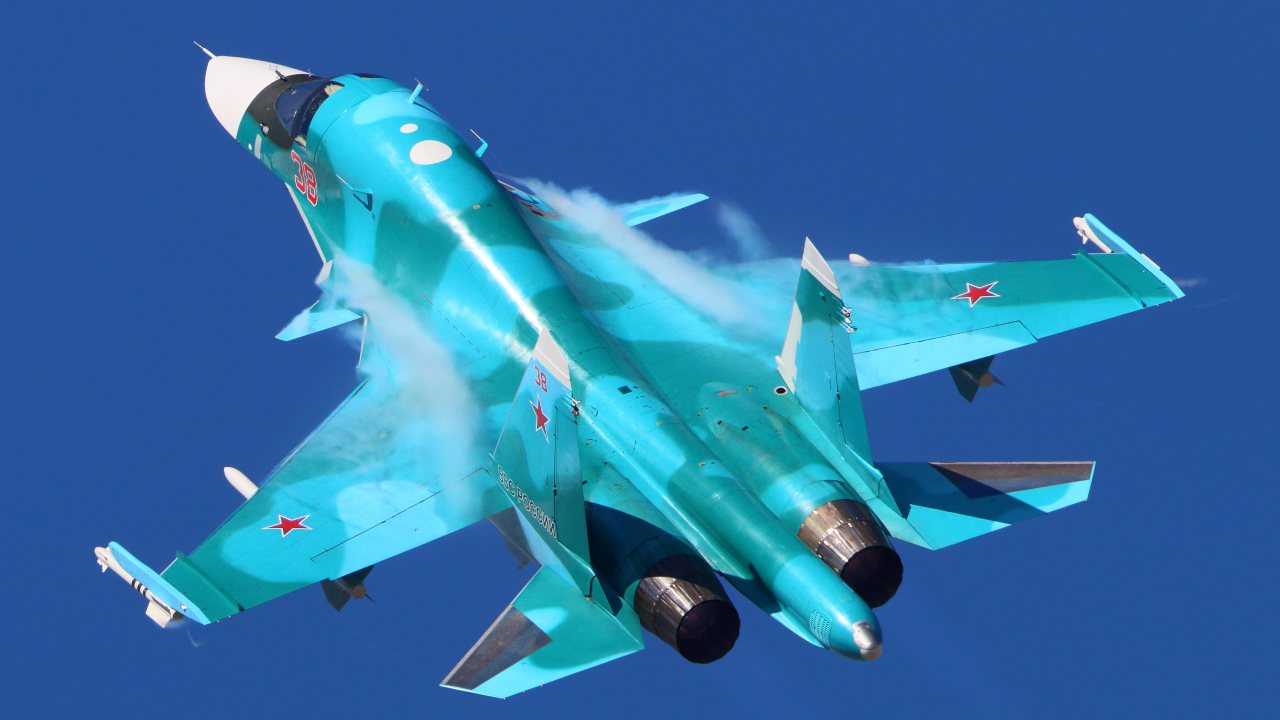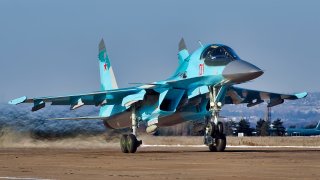Russia's Su-34 Fullback Fighter-Bomber Is In Serious Trouble
Ukraine's Armed Forces announced the downing of three Russian Su-34 fighter-bombers, adding to the toll of Russian aircraft losses in recent days.
Summary: Ukraine's Armed Forces announced the downing of three Russian Su-34 fighter-bombers, adding to the toll of Russian aircraft losses in recent days. Colonel General Oleksandr Syrskyi confirmed the successful combat operation on Facebook, signaling increased anti-aircraft activity. Speculation surrounds the weaponry used, including Patriot missile launchers and older air-defense systems. David Axe highlights the strain on the Russian air force and aerospace industry, suggesting a potential breaking point. Losses coupled with overuse exacerbate Russia's aerial challenges, as highlighted by Michael Bohnert's analysis. The impending arrival of F-16s strengthens Ukraine's defense, further challenging Russia's air superiority.
Russian Su-34 Fighter-Bombers Shot Down in Ukraine: Aerial Warfare Intensifies
Scratch Three More Russian Su-34s in Ukraine: The commander-in-chief of Ukraine's Armed Forces announced on Thursday that three Russian Su-34 fighter-bombers were shot down – bringing the total of Russian aircraft lost to a dozen in just the past 13 days.
"After a successful combat operation against an enemy aircraft on the night of February 29, two more russian aircraft were destroyed: Su-34 fighter-bombers in the Avdiivka and Mariupol directions! Thanks for the combat work!," wrote Colonel General Oleksandr Syrskyi in a post on Facebook.
An additional Su-34 was reportedly lost following that announcement. Russia has not responded to the claims that three of its advanced fighter-bombers were lost, nor has the fate of the downed pilots been reported.
It is also unclear what anti-aircraft weapons were being employed to target and successfully destroy the Russian aircraft, but there is speculation that the American-made Patriot missile launchers could have been moved closer to the front lines, or an older S-200 air-defense system was used to target the aircraft.
David Axe, writing for Forbes.com, also suggested that as Russian forces made advances in Avdiivka two weeks ago it simply means the frontlines are closer to Ukrainian positions. Thus as the Russians advance, they may face greater anti-aircraft fire. A surge in Russian sorties simply has resulted in greater losses.
Russia Could be Reaching an Aerial Breaking Point
Even a few downed aircraft could put greater pressure on the Kremlin – and Axe added, "The Russian air force is losing warplanes far, far faster than it can afford to lose them. Russia's sanctions-throttled aerospace industry is struggling to build more than a couple of dozen new planes a year."
Moscow doesn't have the option to head to deep storage as it has to replenish its forces with vintage tanks. Simply put, Russia doesn't have older aircraft to press into service and while Cold War-era tanks aren't ideal, few could expect vintage fighters to hold their own for long.
Moreover, even without being shot down, the surge in sorties is taking a toll on the Kremlin.
As Michael Bohnert of the RAND Corporation wrote last August, "The Russian Aerospace Forces, or VKS, possessed roughly 900 tactical aircraft before the 2022 invasion of Ukraine. These included fighter, attack, and fighter-bomber aircraft. Since the invasion, it has lost between 84 and 130 of those to air defenses, fighter aircraft, and crashes. That's only a portion of total losses, however. Overuse of these aircraft is also costing Russia as the war drags on."

That is a fact the United States Air Force understands as it didn't actually employ the B-1B Lancer in combat until the 1990s, but just over 25 years later those bombers are in dire need of replacement after being pressed hard in the Global War on Terror. The miles and time in the sky add up, and as Bohnert added, "Aircraft have a life span. They are designed with a total number of expected flight hours, which are used roughly evenly over the life of the aircraft and segmented with periodic maintenance and inspection."
The situation isn't likely to get better when Kyiv receives the long-promised F-16 Fighting Falcons. A few aircraft from the West won't tip the scales completely in Ukraine's favor, but Russia certainly won't have anything close to control of the skies.
Author Experience and Expertise: Peter Suciu
Peter Suciu is a Michigan-based writer. He has contributed to more than four dozen magazines, newspapers, and websites with over 3,200 published pieces over a twenty-year career in journalism. He regularly writes about military hardware, firearms history, cybersecurity, politics, and international affairs. Peter is also a Contributing Writer for Forbes and Clearance Jobs. You can follow him on Twitter: @PeterSuciu. You can email the author: [email protected].


